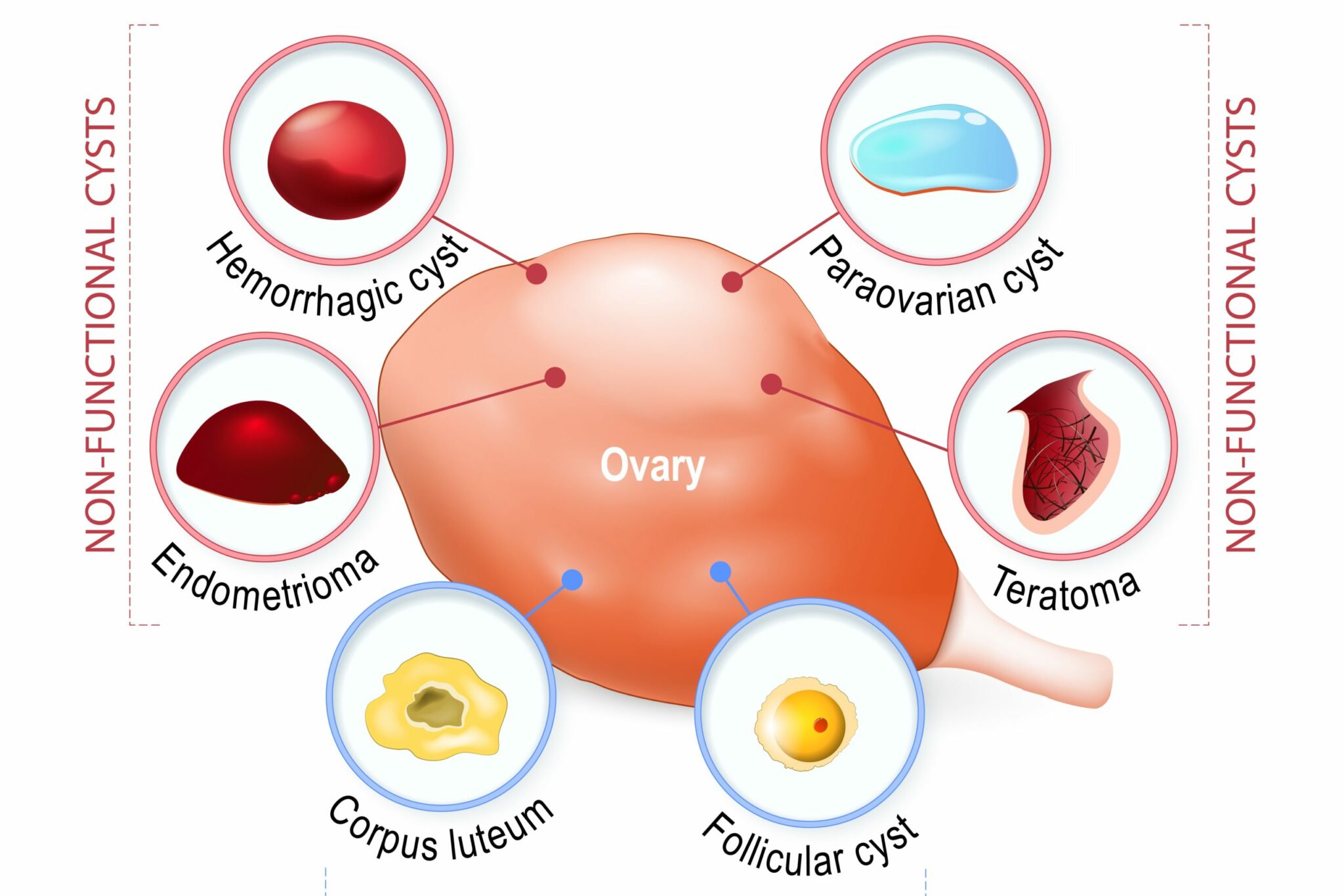Are Ovarian Cysts the Same Thing as Being Diagnosed with PCOS?


- Having ovarian cysts is not the same as being diagnosed with PCOS.
- Polycystic ovaries syndrome is a condition caused by an excess in androgens (male hormones).
- There are several different types of ovarian cysts which can cause PCOS-like symptoms such as painful sex and irregular periods.
- Only cysts that contain an egg (follicular) or did contain an egg (corpus luteum) are associated with polycystic ovaries and PCOS.
The short answer is: no, ovarian cysts and Polycystic Ovarian Syndrome (PCOS) are definitely not the same thing.
PCOS
PCOS is a metabolic condition caused by an excess of androgen hormones that may or may not result in polycystic ovaries. Get your blood tested for PCOS in the privacy of your home.
Polycystic ovaries (PCO)
To begin with, having polycystic ovaries (PCO) is not the same thing as being diagnosed with PCOS. Polycystic ovaries contain a number of partially mature follicles. They are a normal variant of a woman’s ovary.
But polycystic ovaries are also not the same thing as ovarian cysts. When a woman has polycystic ovaries, the cysts referred to in “polycystic” (meaning “many cysts”) are known as follicular cysts. Follicular cysts form when a follicle containing an egg does not open and release the egg. The fluid inside the partially mature follicle then forms a cyst on the ovary. A follicular cyst is a type of functional cyst, meaning it serves some purpose within the ovary.
The other type of functional cyst is a corpus luteum. After a follicle releases its egg, the follicle sac typically dissolves and is reabsorbed by the ovary. However, if the sac doesn’t dissolve and the opening of the follicle seals, additional fluid can develop inside the follicle creating a corpus luteum.
Non-functional cysts
Then there are non-functional cysts, or cysts that do not serve a purpose within the ovary. There are four types of non-functional cyst:
- Hemorrhagic cyst – a hemorrhagic cyst occurs when there is bleeding into a follicular cyst or corpus luteum. Although these can be painful, most disappear spontaneously without follow-up.
- Endometrioma – an endometrioma is a type of cyst that forms when endometrial tissue (the mucous membrane that makes up the inner layer of the uterine wall) grows inside the ovaries.
- Paraovarian cyst – also known as a “paratubal” cyst, a paraovarian cyst is a fluid-filled sac that forms outside the ovaries in the space around the ovaries or fallopian tubes. These cysts usually dissolve on their own and so are often undiagnosed.
- Teratoma – a teratoma is a tumour made up of several types of tissue including hair, muscle or bone. Mature teratomas such as dermoid cysts are normally benign. Immature teratomas may be cancerous.
Symptoms of Ovarian Cysts
Symptoms of ovarian cysts can include:
- Abdominal pain, especially during intercourse
- Pain during or shortly after the beginning or end of your period
- Irregular periods, or abnormal uterine bleeding or spotting.
- Fullness, heaviness, pressure, swelling, or bloating in the abdomen.
- Change in frequency or ease of urination
- Difficulty with bowel movements due to pressure on the pelvis
- Fatigue and headaches
- Nausea or vomiting
- Weight gain
When cysts rupture or burst, and this can happen to functional and non-functional cysts as both contain fluid, you may experience a sudden and sharp pain in the lower abdomen on one side. Usually there are no further complications, although if a particularly large cyst ruptures it can cause internal bleeding. If you are worried, consult your doctor.
Conclusion
If you are diagnosed with “ovarian cysts”, it is important that you clarify exactly what type of ovarian cysts you have. Remember that only functional cysts – follicular cysts and corpus luteum – are related to PCO or PCOS.
Nabta is reshaping women’s healthcare. We support women with their personal health journeys, from everyday wellbeing to the uniquely female experiences of fertility, pregnancy, and menopause.
Get in touch if you have any questions about this article or any aspect of women’s health. We’re here for you.
Sources
- “Ovarian cysts”. Office on Women’s Health. November 19, 2014. Archived from the original on 29 June 2015. Retrieved 27 June 2015.
- Hemorrhagic ovarian cysts: Clinical and sonographic correlation with the management options, Ahmed M.Abbasa, Mariam T.Aminb, Sara M.Tolbac, Mohamed K.Alia, https://doi.org/10.1016/j.mefs.2015.08.001
- “Mature teratoma”. National Cancer Institute. Retrieved 20 December 2017.
- Noor, Mohd Rushdan Md; Hseon, Tay Eng; Jeffrey, Low Jen Hui (2014). Gynaecologic Cancer: A Handbook for Students and Practitioners. CRC Press. p. 446. ISBN 9789814463065.













































